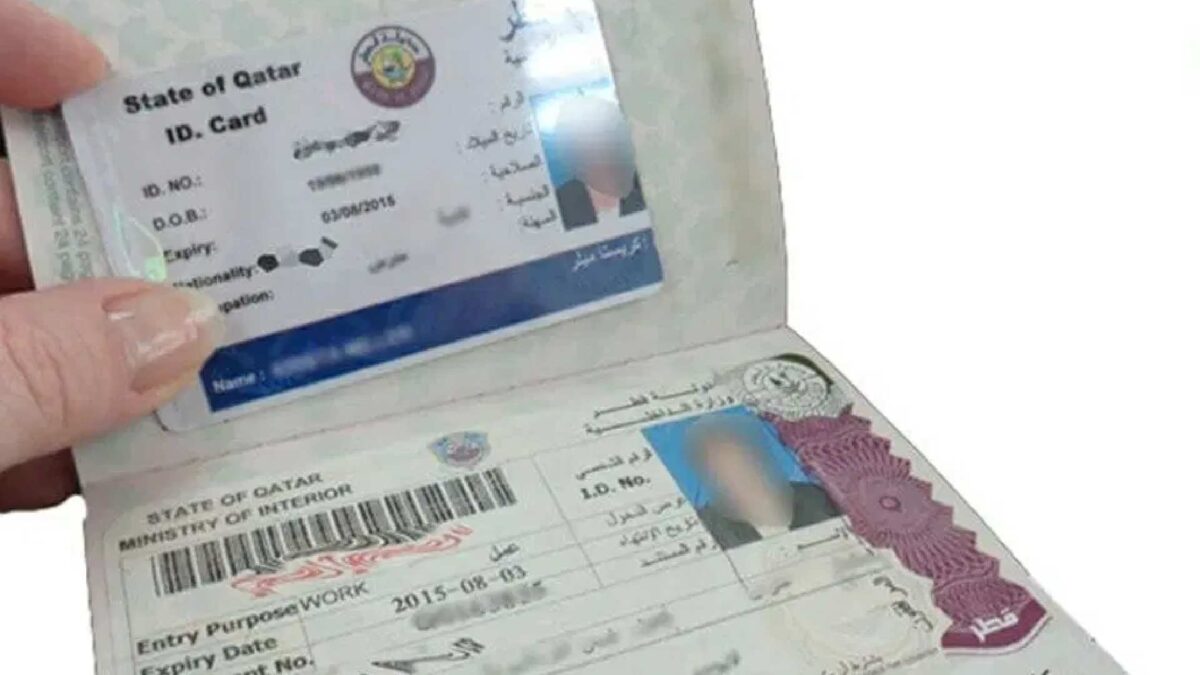With over 60 countries offering working holiday visas, this opportunity is ideal for adventurous individuals looking to experience new cultures, expand their career horizons, and fund their travels while doing so. But how do you get one? What are the best countries for a working holiday visa? And what are the requirements?
In this article, I’ll break down everything you need to know about the working holiday visa, including eligibility criteria, application steps, costs, benefits, and the best countries to apply to.
What is a Working Holiday Visa?
A working holiday visa (WHV) is a special temporary residence permit that allows young people (usually aged 18–35) to travel, work, and live in a foreign country for an extended period, typically ranging from 6 months to 2 years. This visa is primarily designed for cultural exchange, enabling travelers to fund their stay while gaining work experience in different industries.
Unlike a standard work visa, a working holiday visa does not require prior employment sponsorship. This makes it an ideal choice for recent graduates, backpackers, and digital nomads looking to explore a new country while earning an income.
Key Features of a Working Holiday Visa
✔ Temporary Stay: WHVs typically allow 6 months to 2 years of residence, depending on the country. Extensions may be available in certain destinations.
✔ Limited Work Hours: Some countries impose work restrictions, such as a maximum of 6–12 months per employer, to encourage travel and cultural immersion.
✔ Multiple Entry: Many working holiday visas allow holders to leave and re-enter the country throughout their stay, making it convenient for those who want to explore nearby destinations.
✔ Open Job Market: Holders can work in various industries, including hospitality, tourism, agriculture, retail, and teaching. Some countries allow freelance or remote work.
✔ No Employer Sponsorship Needed: Unlike a regular work visa, a working holiday visa does not require an employer to sponsor your stay before entering the country.
✔ Pathway to Residency: Some countries (e.g., Canada and Australia) provide pathways from a WHV to permanent residency or long-term work visas.
✔ Healthcare Access: Some destinations require travelers to purchase health insurance before entry, while others allow WHV holders to access the public healthcare system.
Who Can Apply for a Working Holiday Visa?
The eligibility criteria for a working holiday visa (WHV) vary by country, but most programs have common requirements that applicants must meet.
#1. Age Limit
Most countries set an age restriction of 18–30 years, but some (like Australia, Canada, and France) extend the limit to 35 years for select nationalities.
✔ Example: Australia allows Canadians, Irish, and French citizens to apply until age 35, while others must apply before turning 31.
#2. Nationality
Applicants must be from eligible partner countries that have a bilateral working holiday visa agreement with the host nation.
✔ Example: The United Kingdom’s Youth Mobility Scheme is available to citizens of Australia, Canada, Japan, New Zealand, and South Korea, but not to Americans.
#3. Sufficient Funds
Most countries require proof that applicants have enough money to support themselves while looking for work.
✔ Example: Australia and New Zealand require proof of at least AUD 5,000 (~ USD 3,300) in savings, while Canada typically requires CAD 2,500 (~ USD 1,900).
#4. Health & Insurance Requirements
✔ Some countries require applicants to undergo medical exams before entry.
✔ Many countries mandate that applicants purchase travel or health insurance for the duration of their stay.
✔ Example: Germany and France require proof of comprehensive health insurance before issuing a visa.
#5. No Criminal Record
✔ Many countries require applicants to submit a police clearance certificate or background check.
✔ Example: New Zealand and Canada may request police records to confirm no criminal history before approving a visa.
How to Apply for a Working Holiday Visa: Step-by-Step Guide
If you meet the eligibility criteria, follow this detailed step-by-step guide to successfully apply for a working holiday visa:
#1. Choose Your Destination
Before applying, it’s important to carefully consider your destination country based on the following factors:
✔ Visa requirements – Ensure you meet age, nationality, and financial conditions.
✔ Processing time – Some countries process visas within weeks, while others take months.
✔ Job opportunities – Check the availability of seasonal jobs in industries like hospitality, tourism, and agriculture.
✔ Cost of living – Some cities (e.g., Sydney, London) are expensive, while others (e.g., Auckland, Berlin) may be more affordable.
🔹 Example:
✔ Australia – Processes most working holiday visas within 35 days.
✔ Canada – The International Experience Canada (IEC) program can take several months due to high demand.
✔ New Zealand – Generally issues working holiday visas within 1–2 months.
🔹 Pro Tip: Some destinations have quotas for working holiday visas. Apply early to secure a spot before quotas fill up.
#2. Prepare Your Documents
Each country has specific documentation requirements, but most applications require the following:
✔ Valid passport – Must be valid for at least 6 months beyond your stay.
✔ Proof of funds – Bank statements showing you have enough money to support yourself:
- Australia – Minimum AUD 5,000 (~ USD 3,300)
- Canada – Minimum CAD 2,500 (~ USD 1,900)
✔ Proof of travel or health insurance – Some countries require you to have valid insurance before arrival.
✔ Completed visa application form – Submitted online or in person, depending on the country.
✔ Medical certificate (if required) – Some countries (e.g., New Zealand, Canada) require a medical check-up if you plan to work in agriculture or healthcare.
✔ Police clearance certificate – To prove you have no criminal record (required by countries like Germany, Canada, and New Zealand).
🔹 Pro Tip: Ensure all your documents are in English (or translated if necessary) before submission.
#3. Submit Your Application
Once you have all required documents, you can submit your application through the official immigration website of your chosen country.
✔ Most countries allow online applications.
✔ Pay the visa processing fee, which varies by country:
- Australia – $510 AUD (~$335 USD)
- Canada – CAD 156 (~$120 USD)
- New Zealand – NZD 280 (~$170 USD)
✔ Some countries require applicants to mail or submit documents in person at an embassy or consulate.
🔹 Pro Tip: Some visas are processed faster when using an immigration agent or visa consultant, but this is optional.
#4. Attend an Interview (If Required)
Certain countries require applicants to attend an in-person interview before approving the visa.
✔ Japan & South Korea – Require in-person interviews at their embassies.
✔ Questions may include:
- What is your purpose for applying for a working holiday visa?
- How do you plan to support yourself financially?
- Do you intend to return home after your visa expires?
🔹 Pro Tip: Be honest and confident in your interview. Prepare your answers beforehand.
#5. Receive Your Visa & Start Planning Your Trip
Once approved, you’ll receive a visa sticker in your passport or a digital confirmation via email.
✔ Book your flight – Compare airfare prices and book tickets in advance for better deals.
✔ Find accommodation – Many working holiday travelers stay in hostels or rented apartments.
✔ Look for job opportunities – Some people find jobs before arrival, while others search after landing.
🔹 Pro Tip: Join online working holiday visa forums to connect with other travelers and get insider tips on job hunting, accommodation, and travel.
Cost of a Working Holiday Visa
Here’s a breakdown of average visa fees for some popular destinations:
| Country | Visa Fee (Approx.) |
| Australia 🇦🇺 | $485 AUD (~$320 USD) |
| Canada 🇨🇦 | $250 CAD (~$185 USD) |
| New Zealand 🇳🇿 | $280 NZD (~$180 USD) |
| UK 🇬🇧 | £259 (~$330 USD) |
| Japan 🇯🇵 | Free (for most nationalities) |
| Germany 🇩🇪 | €75 (~$80 USD) |
Benefits of a Working Holiday Visa
A working holiday visa is an exciting opportunity to live, work, and travel in a foreign country. However, while it comes with several benefits, there are also challenges that applicants should consider before applying.
✔ Travel & Work:
One of the biggest advantages of a working holiday visa is the freedom to earn an income while traveling. You can fund your adventures instead of relying solely on savings.
✔ Expand Career Opportunities:
Working abroad enhances your resume by giving you international work experience, adaptability, and cross-cultural communication skills. Employers value candidates with global exposure.
✔ Networking & Friendships:
By working in hostels, restaurants, tourism, or retail, you’ll meet people from different backgrounds and expand your personal and professional network. Many travelers build lifelong friendships and business connections during their stay.
✔ Personal Growth & Independence:
Moving to a foreign country on your own forces you to become independent, manage finances, and adapt to new environments. It’s a life-changing experience that builds confidence and resilience.
✔ Pathway to Permanent Residency:
For some countries, a working holiday visa can be a stepping stone to permanent residency. For example:
- Australia & Canada: Some participants transition from a working holiday visa to a skilled worker visa if they secure a long-term job offer.
- New Zealand: You may be able to extend your visa or switch to an employer-sponsored work visa.
✔ Flexible Job Market:
Most working holiday programs allow you to work in various industries, including:
- Hospitality (Hotels, Restaurants, Bars)
- Tourism (Guides, Adventure Tours, Ski Resorts)
- Retail & Sales
- Agriculture & Farm Work (fruit picking, vineyard work)
- Office & Customer Service Roles
Many of these jobs require no prior experience, making it easy for travelers to find work.
Challenges of a Working Holiday Visa
#1. Limited Work Duration
Many working holiday visas restrict how long you can work for the same employer. For example:
- Australia: You can only work 6 months per employer unless you apply for an extension.
- New Zealand: Some industries limit employment duration to ensure travelers continue to explore.
This means you may have to change jobs frequently, which can be challenging if you prefer job stability.
#2. High Cost of Living
While working abroad, you need to budget carefully because living costs in some countries can be high. Examples of average monthly expenses:
- Sydney, Australia: $2,500–$3,500 USD (rent, food, transport).
- London, UK: $2,000–$3,200 USD (accommodation costs are high).
- Toronto, Canada: $2,000–$2,800 USD (especially in city centers).
Solution: Share accommodation (hostels, shared apartments) and budget wisely before traveling.
#3. Job Availability May Vary:
Some industries hire more seasonal workers than others. For example:
- Hospitality & tourism jobs are plentiful in summer and winter resort towns.
- Office or skilled jobs may be harder to find unless you have prior experience.
- Agricultural jobs may require physical labor and long hours.
Solution: Research job availability before traveling and apply in advance if possible.
#4. Language Barriers & Cultural Differences:
If you are travelling to a non-English-speaking country (e.g., Japan, Germany, South Korea), you may need to learn basic phrases to communicate at work. Some employers prefer bilingual workers.
Solution: Take language courses before travelling or use translation apps to help with communication.
FAQs About Working Holiday Visas
Can I extend my working holiday visa?
It depends on the country. Australia allows extensions, while most others require a new application.
Do I need a job before applying?
No, but securing a job before arriving can help with financial stability.
What kind of jobs can I get?
Popular industries include hospitality, tourism, farming, teaching, and retail.
Can I apply for permanent residency after a working holiday?
Some countries, like Canada and Australia, offer pathways to PR through work visas.
Key Takeaways
1. A working holiday visa allows young people (18–35) to travel and work abroad.
2. Australia, Canada, and New Zealand are among the most popular destinations.
3. Applicants need proof of funds, health insurance, and a valid passport.
4. Visa costs vary from $100 to $500, depending on the country.
5. Work options include hospitality, tourism, agriculture, and education.
Conclusion
A working holiday visa is an incredible opportunity to explore new countries, gain work experience, and meet people from all over the world. Whether you want to backpack across Australia, work in a ski resort in Canada, or teach English in Japan, there’s a program for you.
Would you consider applying for a working holiday visa? If so, which country interests you the most? Let me know in the comments! 😊






